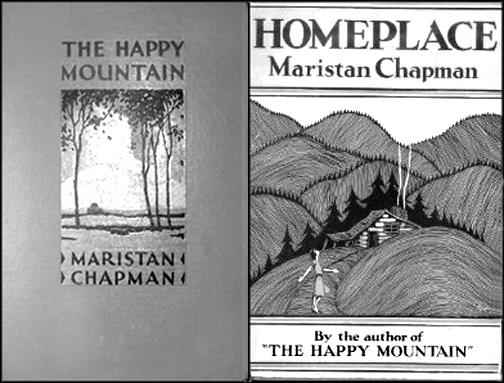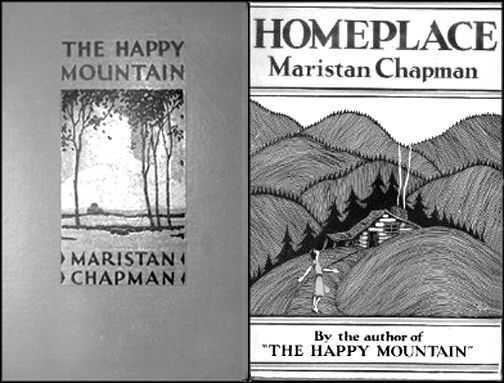Two novels by Maristan Chapman titled, The Happy Mountain (1928) and Homeplace (1929), offer insights into the manners and mores of southern mountaineers who struggled against approaching change in their secluded land. She lived in the southwestern portion of the Cumberland Mountains just over the Tennessee state line.

Chapman's objective in writing the books was to educate outsiders about her people whose remote existence was widely misunderstood. Almost overnight she became an authentic interpreter and historian of southern mountaineer culture. She told her story in fictional novels that was historically accurate, making them both entertaining and educational. The Literary Guild of America was so duly impressed with The Happy Mountain that they endorsed it.
To the average “outlander,” a designation used by mountain country folks to describe city dwellers, the diet of the hill people was believed to consist only of fundamental and bland food that was as unvarying as the hills and mountains themselves. But according to Maristan, mountain people not only enjoyed plenty of first-rate food, they also knew how to make it palatable – both wholesome and mouth-watering.
“Most of the food that is consumed is raised by the people themselves,” said Mrs. Chapman. “They have as unreasoning a horror of canned foods as they have of various labor saving devices that hail from the outlanders. They eat as people do who have hard work to accomplish, for earning a living means to earn it through a constant battle with the soil itself. Food is never really eaten in very large quantities. The meals are simple, nutritious and appetizing.”
Breakfast consisted of cereal, fried eggs, some cold bread left over from supper the night before, coffee and preserves. Fruit was never eaten for breakfast; instead, it was eaten between meals as snacks.
Dinner generally consisted of a variety of meat, fried eggs, tomatoes, beans and potatoes. Tomatoes were frequently fried with bacon or stewed with rice. Preserves or fruit butters were almost always present at the table. It was eaten with hot bread and butter; no meal was considered complete without them.
Supper was somewhat of an extension of dinner. Whatever was left over from the midday meal was served again in the evening along with hot bread and buttermilk. Usually, a homemade pie was added to the menu “to sweeten the stomach.” Staple bread was made of cornmeal in a variety of forms such as from the humble pone of meal and water that was baked crisp in hot ashes of an open hearth. Another delight was the fluffy and succulent Sally Lunn, a type of yeast bread lightly scented with lemon that originated in England. It was traditionally sliced horizontally, spread with butter or whipped or clotted cream and reassembled for the meal.
Biscuits were made with sour milk and soda. The mountaineers never used baking powder because they believed it was tainted “fetched-on stuff” supplied from the towns. Their biscuits were large and distinctly browned, each one resembling a small loaf of bread.
Bread products were eaten piping hot. They were covered with white unsalted butter that was similar to clotted cream or consumed with one of the many preserves or fruit butters on hand. Sometimes the biscuits were eaten cold, made into sandwiches containing a slice of cold meat or overstuffed after butter has been spread within them.
According to Mrs. Chapman, southern mountain folks worked hard and were rewarded handsomely with appetizing food on their rustic dinner tables. I ordered both books and am currently reading them.
